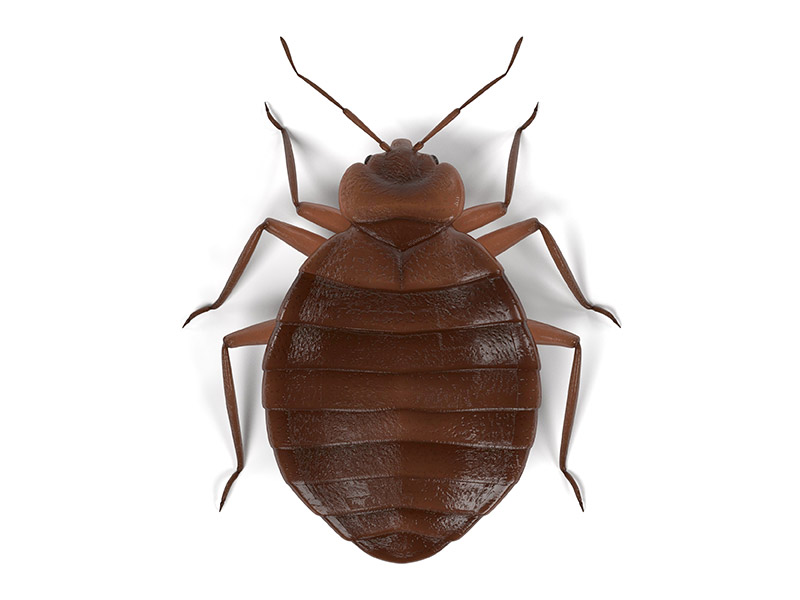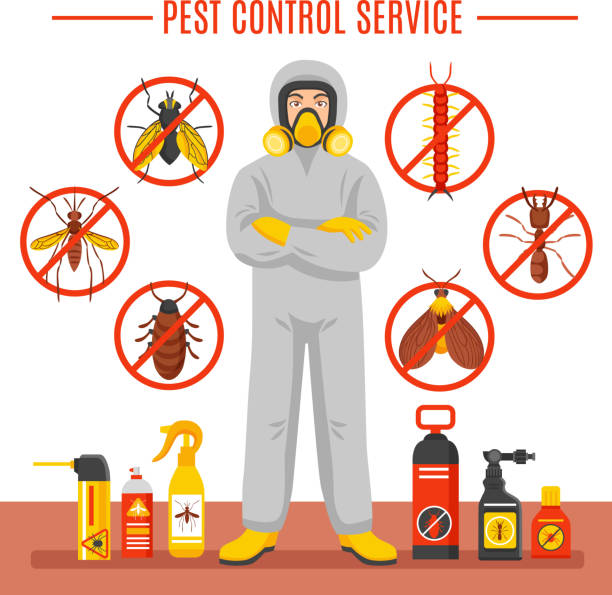Get professional Pest Control for your home and ensure safety.
Eco-Friendly Insect Control Approaches for Managing Wildlife in Urban Locations
Urban areas usually find themselves at the crossway of human task and wild animals, leading to special challenges in insect management. Environmentally friendly methods highlight lasting coexistence, using strategies such as environment modification and natural repellents to minimize human-wildlife conflicts. These strategies not only safeguard the setting however likewise enhance area interaction in wild animals monitoring. As city populations continue to grow, understanding the dynamics of wildlife interactions becomes significantly critical. What ingenious approaches can be implemented to make certain both environmental balance and urban safety and security? Exploring this inquiry reveals a compelling landscape of potential remedies.
Recognizing Urban Wildlife Characteristics
Comprehending Urban Wild animals Dynamics is necessary for establishing effective and green bug control strategies. Urban locations are significantly becoming habitats for different wildlife species, driven by elements such as habitat fragmentation, food availability, and human infringement. Acknowledging these characteristics enables a nuanced strategy to pest management that lines up with ecological concepts.
Urban wildlife usually includes varieties such as raccoons, squirrels, and birds, which adjust to city atmospheres, discovering specific niches in green rooms, parks, and even property locations. Their presence can lead to conflicts with humans, especially when they manipulate human resources for food and shelter. Recognizing the behaviors and environmental roles of these types educates strategies that minimize adverse interactions while promoting biodiversity.
In addition, recognizing the interdependencies within metropolitan communities aids in determining vital locations for habitat conservation and repair. This understanding contributes to the advancement of incorporated insect monitoring (IPM) strategies that consider the ecological balance, consequently minimizing reliance on unsafe chemicals. By fostering coexistence in between people and city wild animals, cities can create healthier environments that benefit both citizens and local ecosystems, leading the way for sustainable metropolitan living.
Natural Repellents and Deterrents
Natural repellents and deterrents supply a sustainable alternative to traditional pest control methods by utilizing the power of nature to maintain undesirable species away. These environment-friendly options generally utilize plant-based components, important oils, and other naturally taking place compounds that hinder bugs without hurting the atmosphere.
One reliable all-natural repellent is peppermint oil, which is recognized to fend off rats and bugs. Its solid scent is undesirable to lots of insects, making it a popular selection for city setups. Likewise, vinegar and citrus peels can act as deterrents, as their solid odors are normally uninviting to different wildlife.
Additionally, diatomaceous earth is a natural powder that can be spread out in locations susceptible to bug activity, properly dehydrating and discouraging insects without presenting threats to non-target species. Garlic sprays and neem oil are acknowledged for their capacity to repel a broad variety of bugs, including both insects and bigger wildlife.
Implementing these all-natural repellents not only reduces reliance on chemical pesticides however likewise advertises a healthier city ecosystem, promoting a more balanced coexistence between human beings and wild animals. By using these methods, metropolitan locations can successfully manage bug populaces while lessening ecological impact.
Habitat Alteration Methods
Reliable habitat adjustment methods play a vital duty in sustainable insect management by altering the atmosphere to make it much less for pest infestations. By recognizing the eco-friendly dynamics of metropolitan areas, homeowner can carry out strategic alterations that deter bugs while advertising biodiversity.
(Carpenter ant control Port Charlotte)One main method entails keeping correct sanitation. This includes normal waste elimination, protecting trash can, and eliminating standing water to minimize breeding sites for pests and rats. In addition, landscape design methods such as choosing indigenous plants can boost environmental balance, supplying habitats for beneficial organisms while minimizing sources for bugs.
An additional important strategy is to seal entry factors in structures. Checking and fixing cracks in foundations, wall surfaces, and windows can dramatically reduce bug accessibility. Furthermore, creating physical obstacles, such as fencings or plant buffers, can prevent wild animals movement into human-inhabited locations.
Integrated Pest Management Practices
Building upon environment modification methods, integrated bug monitoring (IPM) methods offer a holistic method to regulating parasite populaces while decreasing environmental influence. IPM incorporates different techniques, including organic, social, mechanical, and chemical controls, to accomplish efficient insect management.
Biological control entails the intro of all-natural killers or bloodsuckers to reduce parasite populaces. Cultural practices, such as crop rotation and cleanliness, disrupt pest life cycles and reduce their habitats - Pest control service. Mechanical controls, like catches and obstacles, supply prompt relief from bug pressures without chemical intervention
Chemical controls are utilized as a last hotel, concentrating on targeted applications that limit harm to non-target species and the atmosphere. The selection of ecologically friendly chemicals, when necessary, is indispensable to the IPM structure. Additionally, keeping an eye on pest populations and analyzing potential damage helps notify decision-making, guaranteeing that treatments are prompt and effective.
Neighborhood Involvement and Education And Learning

(Pest Control Services)Workshops and educational sessions can gear up residents with knowledge regarding indigenous species, habitat conservation, and reliable non-toxic pest administration techniques. Partnership with schools, neighborhood companies, and federal government firms additionally enhances academic outreach, guaranteeing that necessary information gets to diverse target markets.
Furthermore, community-led efforts, such as area clean-up days and habitat reconstruction tasks, not only promote biodiversity yet additionally strengthen community connections. Pest control service. By motivating locals to share their experiences and monitorings, communities can develop targeted approaches that resolve certain local parasite problems
Integrating feedback from locals into parasite monitoring prepares enables a much more receptive and adaptive technique to wild animals obstacles. Ultimately, notified and engaged areas are vital to attaining long-term success in environment-friendly bug control, causing much healthier urban atmospheres that respect both human and ecological requirements.

Verdict
In conclusion, environmentally friendly pest control comes close to offer sustainable services for handling metropolitan wild animals. By focusing on habitat alteration, utilizing all-natural repellents, and applying incorporated pest administration practices, neighborhoods can Termite treatment Port Charlotte cultivate a harmonious coexistence with regional fauna.